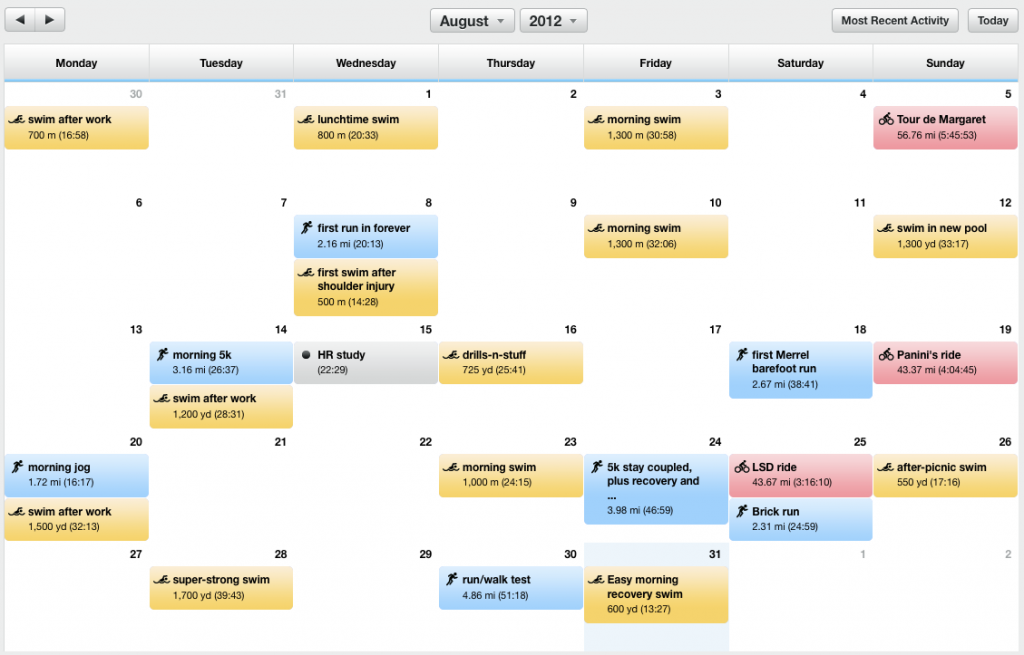America's Most Beautiful Bike Ride (AMBRR) went very well yesterday. It was a quick 36 hour up-and-down trip that included a bike ride all the way around Lake Tahoe and a quick trip through Truckee and Northstar to check out parts of the Ironman Tahoe course, and a then a couple extra miles to push it just over 100 miles. The only downside was that my Garmin 910 cut off the last 30 miles of my ride. Apparently there's a known bug with Garmins that cause them to truncate long rides when space is running low. The moral of the story is to make sure you clear enough memory before a ride starts. Obviously a bug, and there's apparently no plan from Garmin to ever address it. The good news is that I have the data from the parts of the Ironman Tahoe course that I rode.
Here's the Strava link for my ride: http://app.strava.com/activities/57879712 I really did continue on around the lake clockwise and end up where I started - you'll just have to take my word for it. I created a new segment in Strava just for the part of Brockway Pass that is part of Ironman Tahoe. Currently there are 499 people that have ridden it and I can only imagine how many uploads Strava will get on September 22nd. :-)
We're heading back up to Lake Tahoe in a couple weeks for a more structured training weekend and I'll be able to swim, bike, and run the entire course and collect a lot more data.
You can keep track of my fundraising progress on my Team In Training page and help my fight blood cancer by making a donation of any size. http://pages.teamintraining.org/sj/irnmnltt13/bjohnsuovy
